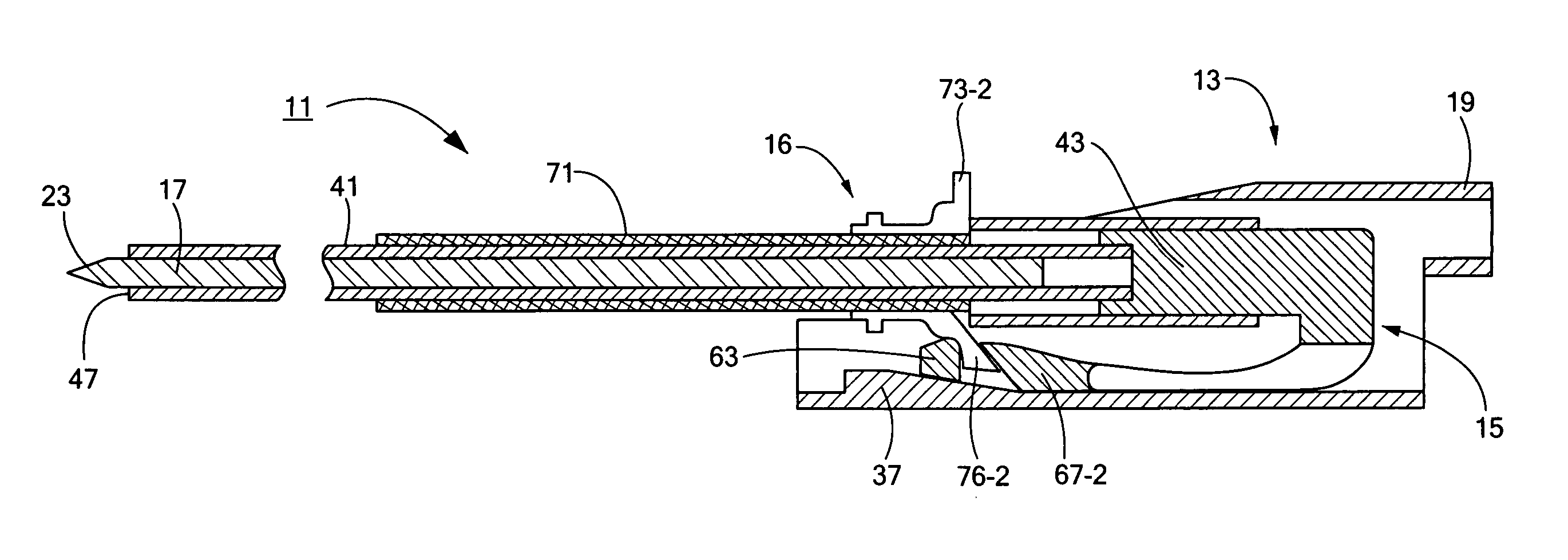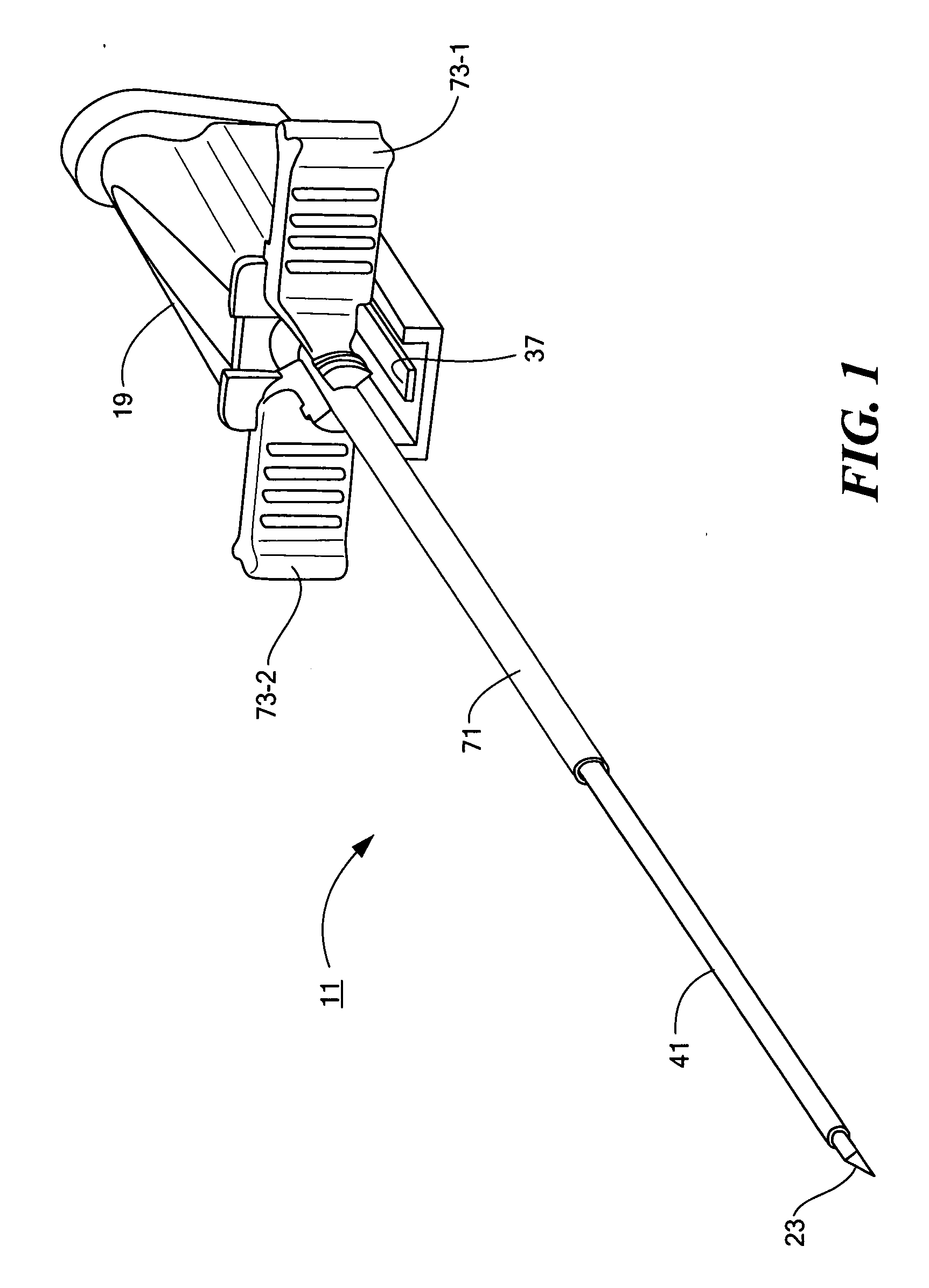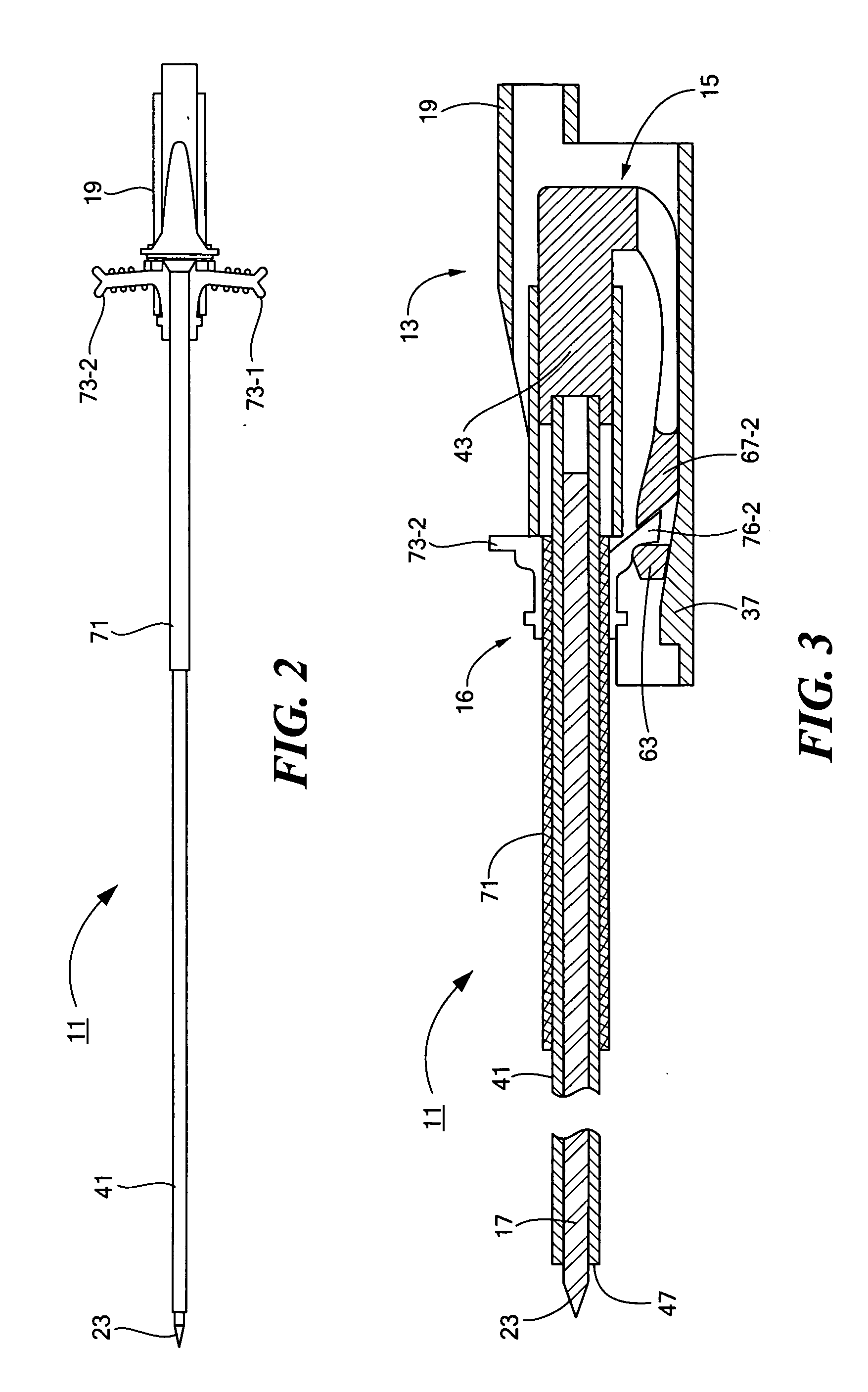Percutaneous endoscopic jejunostomy access needle
a jejunostomy and access needle technology, applied in the field of access needles, can solve the problems of not being suited for long-term use, not being able to provide a means for angiocath® access needle, and patients not being able to take food and/or medications transorally
- Summary
- Abstract
- Description
- Claims
- Application Information
AI Technical Summary
Benefits of technology
Problems solved by technology
Method used
Image
Examples
Embodiment Construction
[0029] Referring now to FIGS. 1 through 3, there are shown perspective, top and section views, respectively, of one embodiment of an access needle constructed according to the teachings of the present invention, said access needle being represented generally by reference numeral 11. As will be discussed further below, access needle 11 may be used, for example, in a percutaneous endoscopic jejunostomy (PEJ) procedure.
[0030] Access needle 11 comprises a stylet assembly 13, a safety sheath assembly 15 and a cannula assembly 16.
[0031] Stylet assembly 13, which is also shown separately in FIGS. 4(a) through 4(d), comprises a stylet 17 and a stylet hub 19. Stylet 17, which is preferably made of stainless steel, is a solid, generally cylindrical member of small diameter. Stylet 17 includes a proximal end 21 and a distal end 23, distal end 23 being in the shape of a sharp, three-sided tip adapted to penetrate one or more body parts, such as the abdomen and jejunum of a patient undergoing ...
PUM
 Login to View More
Login to View More Abstract
Description
Claims
Application Information
 Login to View More
Login to View More - R&D
- Intellectual Property
- Life Sciences
- Materials
- Tech Scout
- Unparalleled Data Quality
- Higher Quality Content
- 60% Fewer Hallucinations
Browse by: Latest US Patents, China's latest patents, Technical Efficacy Thesaurus, Application Domain, Technology Topic, Popular Technical Reports.
© 2025 PatSnap. All rights reserved.Legal|Privacy policy|Modern Slavery Act Transparency Statement|Sitemap|About US| Contact US: help@patsnap.com



